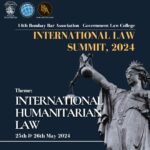Landmark Judgments on IPR Law in World (International IPR) – IPR Club OurLegalWorld
1. HARVARD COLLEGE v. CANADA (COMMISSIONER OF PATENTS) 2002 SCC 765
The President and Fellows of Harvard College (Harvard) (plaintiff) submitted a patent application for an oncomouse, a genetically altered rodent with increased susceptibility to cancer, rendering it useful for research. The patent application described the process by which a cancer-promoting gene (oncogene) is injected into fertilized mouse eggs and implanted into a host mouse. Offspring of the host mouse is tested for the oncogene and later used for cancer research. Harvard intended to patent both the process of producing oncomice and the oncomice produced from genetic alteration. Harvard also extended the patent claims to cover all non-human mammals. The Patent Examiner rejected the patent, concluding that higher life forms are outside the definition of “invention” in § 2 of the Patent Act of 1985 (Act), and therefore are not patentable subject matter. The Commissioner of Patents and Trial Division of the Federal Circuit affirmed the Patent Examiner’s decision, but the Federal Court of Appeal overturned it. On appeal, Harvard contended that the language of the Act should be read broadly in light of the Act’s goal of encouraging innovation. Harvard also asserted that because lower life forms like bacteria and yeast fit within the definition of “invention,” higher life forms should not be excluded, as the Act does not make any distinctions based on the complexity of the subject matter.
Also Read: Review of Article 27.3(b) Under TRIPS Agreement: OurLegalWorld
2. BRISTOL-MYERS SQUIBB CO v. CANADA (ATTORNEY GENERAL) 2005 SCC 26
A cancer-fighting medicine (paclitaxel) was discovered by the National Cancer Institute in the United States and was given to the public domain. Bristol-Myers Squibb Company and Bristol-Myers Squibb Canada Inc. (collectively BMS) had three patents related to the formulation and method of administration of paclitaxel marketed under the name Taxol. Biolyse submitted a New Drug Submission (NDS) for its paclitaxel for injection. Since Biolyse’s drug had a different botanical source of paclitaxel than BMS’s Taxol, and Biolyse made claims for new and different uses, Health Canada had recommended that Biolyse submits an NDS rather than an Abbreviated New Drug Submission. The Minister of Health issued a Notice of Compliance (NOC) to Biolyse. BMS applied to quash the NOC. BMS argued that s. 5 of the Patented Medicines (Notice of Compliance) Regulations was engaged and the Minister, therefore, erred in failing to require that Biolyse serve a Notice of Allegation on BMS.
3. JT INTERNATIONAL SA v. COMMONWEALTH OF AUSTRALIA [2012] HCA 43
This was a case brought by JT International SA and the British American Tobacco group challenging the Tobacco Plain Packaging Act 2011 (Cth). Other tobacco companies, Philip Morris Limited, Van NelleTabak Nederland BV, and Imperial Tobacco Australia Limited participated by way of intervention. Effectively, the Tobacco Plain Packaging Act 2011 prevents tobacco companies from using their own get up, trademarks (other than their brand word marks and variant names), and other intellectual property to distinguish their products from those of their competitors. The legislation requires cigarette packaging to have a drab brown-colored background, with the brand name placed on it in a standard size, font, and location on the package. The legislation also imposes other extensive imitations. Information and warnings about the use of tobacco products will take up much of the free space on the package. It was argued on behalf of the tobacco companies that the legislation involved the acquisition of property from them within the meaning of s 51(xxxi) of the Constitution and that as a result, the Commonwealth was required to provide compensation.
4. DYSON LTD v. REGISTRAR OF TRADEMARKS
Dyson was a manufacturer of bagless vacuum cleaners since 1993. It sought to register a mark consisting of a “transparent bin or collection chamber forming part of the external surface of a vacuum cleaner as shown in the representation”, with no attempt to limit the registration to any particular shape or color. The High Court held that the illustrations were solely descriptive of the product and made a preliminary reference to the European Court of Justice (ECJ) on the issue of distinctiveness under the Trade Marks Act 1994. However, the ECJ chose to discuss the subject matter of the application in the first place.
5. WAL-MART STORES INC v. SAMARA BROTHERS INC 529 US 205 (2000)
Respondent Samara Brothers, Inc., designs and manufactures a line of children’s clothing. Petitioner Wal-Mart Stores, Inc., contracted with a supplier to manufacture outfits based on photographs of Samara garments. After discovering that Wal-Mart and other retailers were selling the so-called knockoffs, Samara brought this action for, inter alia, infringement of unregistered trade dress under § 43(a) of the Trademark Act of 1946 (Lanham Act). The jury found Samara. Wal-Mart then renewed a motion for judgment as a matter of law, claiming that there was insufficient evidence to support a conclusion that Samara’s clothing designs could be legally protected as distinctive trade dress for purposes of § 43(a). The District Court denied the motion and awarded Samara relief. The Second Circuit affirmed the denial of the motion.
6. PERSON’S CO LTD v. CHRISTMAN 900 F2d 1565 (Fed Cir 1990) [USA]
Person’s Co., Ltd. appeals from the decision of the Patent and Trademark Office Trademark Trial and Appeal Board (Board) which granted summary judgment in favor of Larry Christman and ordered the cancellation of the appellant’s registration for the mark “PERSON’S” for various apparel items. Appellant Person’s Co. seeks cancellation of Christman’s registration for the mark “PERSON’S” for wearing apparel on the following grounds: the likelihood of confusion based on its prior foreign use, abandonment, and unfair competition within the meaning of the Paris Convention.
7. MASTERPIECE INC. v. ALAVIDA LIFESTYLES INC., 2011 SCC 27, [2011] 2 S.C.R. 387
Masterpiece Inc. and Alavida Lifestyles Inc. were both involved in the retirement residence business, with the former operating in Alberta, and the latter in Ontario. Prior to December 2005, Masterpiece Inc. used several trade-marks which included the word “Masterpiece”, as well as its trade name “Masterpiece Inc.” Masterpiece Inc. (incorporated in 2001) undertook the construction of retirement residences in Alberta during the relevant period of 2001 to 2005, operating under its corporate name of Masterpiece Inc. as a trade-name. Moreover, Masterpiece Inc. used several unregistered trademarks, including “Masterpiece the Art of Living,” and “Masterpiece the Art of Retirement Living.”[4] Alavida Inc. was incorporated on August 4, 2005, and applied to register the trademark “Masterpiece Living” on December 1, 2005, on the basis of the proposed use. The mark was registered unopposed on March 23, 2007, and Alavida has used the trademark since January 2006. Masterpiece Inc. applied to register “Masterpiece” as a trademark (January 2006) and applied to register the trademark “Masterpiece Living” (June 2006).[5] Prior application by Alavida resulted in the denial by the Registrar of both the trade-mark applications submitted by Masterpiece Inc. On March 16, 2007, Masterpiece Inc. applied to expunge Alavida’s registration.
8. NATION FITTINGS (M) SDN BHD v. OYSTERTEC PLC [2006] 1 SLR 712; [2005] SGHC 225ANHEUSER-BUSCH v. BUDĔJOVICKÝ BUDVAR, C-245/02, the CJEU
The Appellant (“Caterham”) claimed exclusivity for its product, the Caterham Seven or Super Seven, and alleged that the Birkin Seven, the product of the first Respondent (“Birkin”) was being passed off as that of Caterham’s. Caterham Seven and the Birkin Seven were both replicas of the Lotus Seven Series III sports car. There were no registered trademarks, designs, or patents that had a bearing on Caterham’s rights. Caterham’s main claims in the trial court related to copyright infringement. All the original claims were dismissed by the trial court; leave to appeal on copyright was refused but the court a quo granted leave to appeal on passingoff. On appeal, Caterham limited the relief sought to an interdict restraining Birkin from manufacturing, marketing, selling and exporting from South Africa a sports car having the distinctive shape and configuration using thenumeral Seven.
Written by Khushi Gupta (IPR Club Intern)




![Call for Campus Ambassadors by Our Legal World [2 Months; Virtual]: Apply by June 15](https://www.ourlegalworld.com/wp-content/uploads/2024/06/Logo-New-136x150.png)


